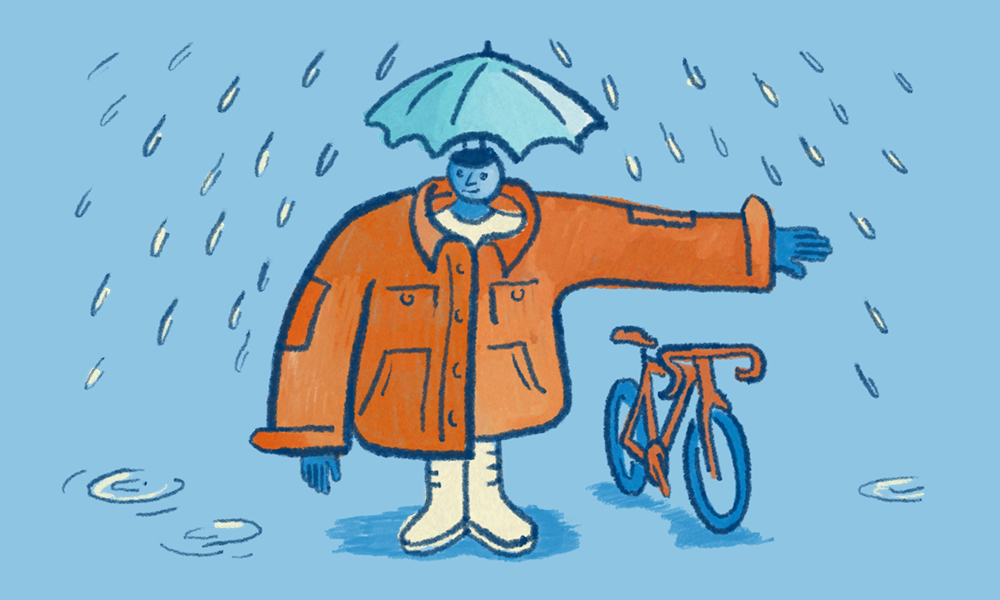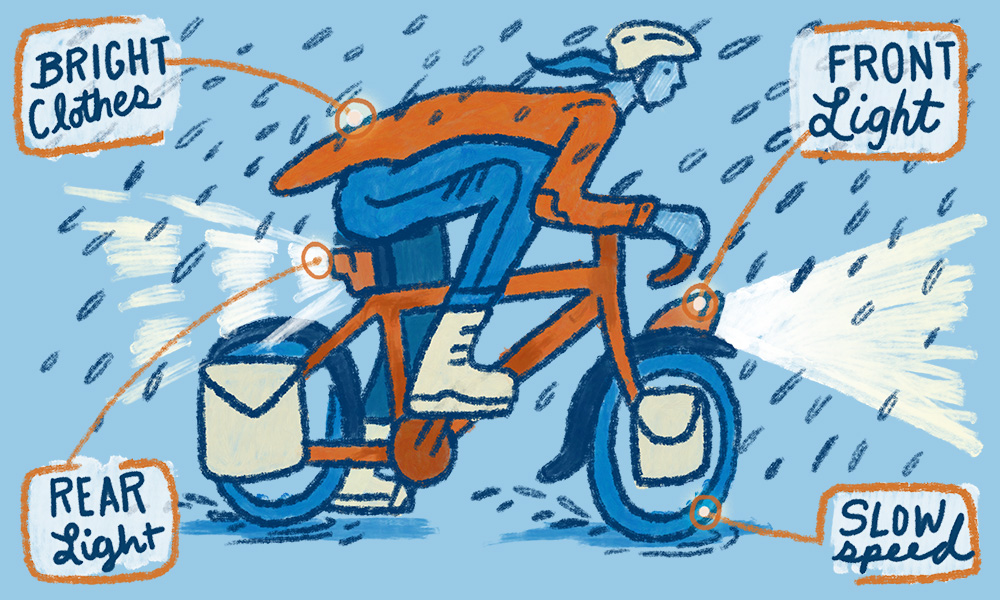What to Do When Bad Weather Strikes
Even if you take your tour during the most recommended season for the area, it’s impossible to predict everything and improbable that you’ll outride any inclement weather that comes your way. Whether you encounter pouring rain, a lightning storm, or thick fog, bad weather can halt a bicycle tour in its tracks.
The good thing about weather is it’s always changing! It’s okay to stop, take care of yourself, stay safe, and wait for the skies to clear. Good gear and patience will get you a long way.
Our Recommendations for Bad Weather
Think safety first. If you have to stay in a hotel or stop riding for a day to avoid dangerous conditions, do so. We’ve heard stories of people taking cover in all sorts of out-buildings, churches, forest service outhouses — smelly but a welcome sight in the backcountry during freezing temps and precipitation — and more.

In the Midwest and plains of the U.S., you can generally see bad weather, and serious events like tornadoes, from a long distance away. Take precautions before a storm or tornado hits. If you get stuck outside during a tornado, seek the lowest spot around (a ditch for instance), cover your head with your arms, and be sure and stay away from cars and trees if possible.
Tornadoes and hail definitely require cover but even in moderate rain, it’s best to go with your gut; if you feel unsafe, stop and find shelter.
Wear waterproof layers and keep your belongings dry. If your tent is already wet, strap it to the outside of your bike bags instead of stuffing it inside.

Rain and fog reduce visibility for you and those around you, dramatically increasing risks. If you insist on riding in inclement weather on a road with cars, wear bright colors and flashing lights on both the front and rear of your bicycle so drivers have a better chance of seeing you. Also, ride slowly so that you can see road hazards like railroads tracks, cracks, and storm drains before it’s too late.


